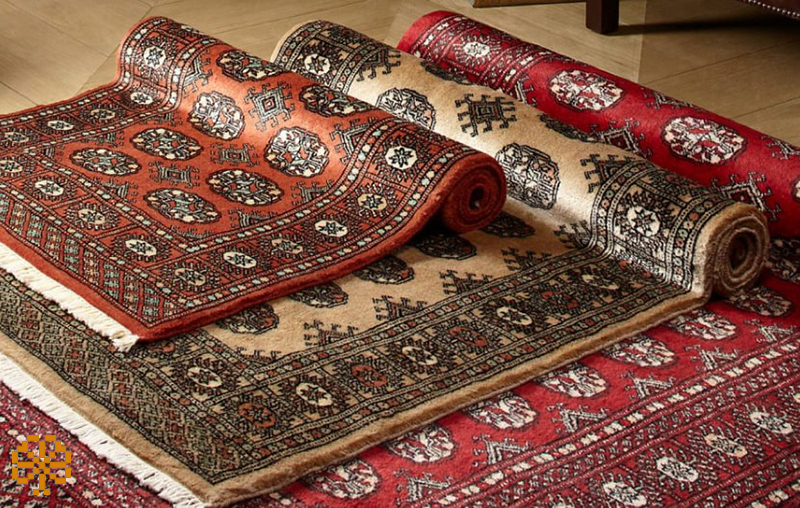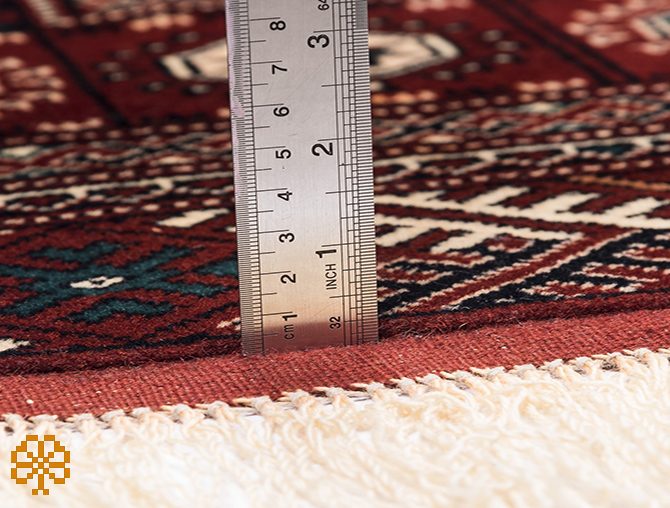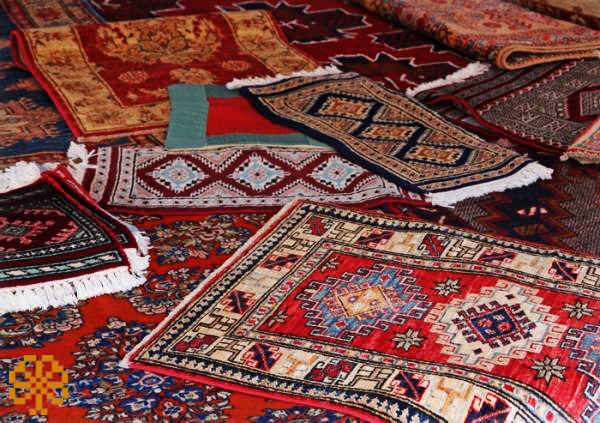Common terms in handmade carpet sizes + method of measuring carpet dimensions

Iranian hand-woven carpets are produced and marketed in various dimensions and sizes. These dimensions can be divided into several major groups that buyers of handmade carpets are best acquainted with to master the common literature in the carpet trade.
The most common terms in handmade carpet sizes are:
Carpets: Carpets produced larger than 2 by 3 meters in the market are called carpets.
Rugs: Carpets up to 4 square meters in size with standard sizes of 1.5 by 2.5 meters to 170 by 230 cm are called rugs.
Curtains Rug: Carpets up to 6 square meters and larger than 4 meters with a length and approximate width of 180 by 280 cm are called curtains. Sometimes a curtain with a rug is considered one.
Head Rug: A head or a headboard or a rug that is 3 to 4 meters long and wider than the side and is usually 120 to 150 cm, which is used to furnish between two rugs or the top of the rug in width.
Side Rug: Side is a carpet that is usually one meter less and less and 3 times longer and more than the width. Like carpet 1 meter by 3 meters.
Zare and a half Carpet: The main size of Zare and a half carpets is 168 by 112 Turkish and 156 by 104 cm Persian, but in the market, carpets with dimensions of one by one and a half are called Zare and a half.
Read more: What is the rajshomar handmade carpets and how is it calculated?
Prayer Rug: A prayer place or a rug with an altar design and generally woven on it for use in performing prayers. These carpets are generally 80 by 110 cm in size.
Back Rug: One of the smallest common carpet sizes is known as back or paddy and the approximate size of this type of carpet is 70 by 50 cm.
Other dimensions and sizes are also used in some cases, which due to the rare use of these terms, their explanation has been refused, such as Kharak, Zare and Charak and …
What is the method of measuring the dimensions of the carpet?
Due to the fact that hand-woven carpets and hand-made products do not follow specific standards due to their special characteristics, especially in precise dimensions and sizes, therefore, sufficient care should be taken in measuring the area of carpets. Because the mistake in accurately measuring the length and width of the carpet and calculating it, in addition to financial losses will cause some carpet defects to be hidden.
In measuring the dimensions of the carpet, it should be noted that the unit of measurement is in terms of meters and the meter in question will be of the fabric strip type and contained in centimeters and millimeters.
To measure the dimensions of the carpet, first flatten the carpet on a flat surface so that it does not have any wrinkles.
To measure the length and width of carpets larger than 6 square meters, we measure three parts of the width or length of the carpet (sides and middle) and calculate its average. But to measure carpets larger than 3 by 4 meters or lengths of more than 4 meters by five parts or more, we measure and average the width of the carpet.
It should be noted that in measuring the length of the carpet, the roots and kilims of the carpet texture will not be included in the dimensions. Unless the kilim part of the carpet has an important role in the design of the carpet in terms of design and embossed and special role. For example, gold weaving or other decorative weaving techniques have been used, the size of which will be increased to the length of the carpet according to the agreement of the buyer and the seller.
In measuring the width of the carpet, the Selvadge of the carpet is not included in the width of the carpet. The accuracy of measuring the dimensions of the carpet will be up to one centimeter.
In measuring the thickness of the carpet, only the length of the lint above the surface of the carpet is desired. (Above the kilim of carpet)
In evaluating carpets and calculating the price based on carpet dimensions, it should be noted that large fabric carpets are more valuable than smaller carpets with known sizes (up to 12 square meters) if they meet certain standards and do not have related defects. Large fabric nomadic carpets (larger than 9 meters) are also more valuable due to the limitations of the texture of large fabric carpets among the nomads and their scarcity.
The most common method of evaluating carpets in domestic markets is to pay attention to the density of carpet knots. That is, calculating the number of knots that are placed on a certain surface such as arm knots, square inches or square decimeters, and the more knots these units per unit area, the more value and price the carpet will have, therefore, calculating the exact dimensions of the carpet is important.
It should be noted that this method is regardless of the historical values and aesthetics of the carpet, because in this case, many rural and nomadic carpets will be lower than the value of Rials.







